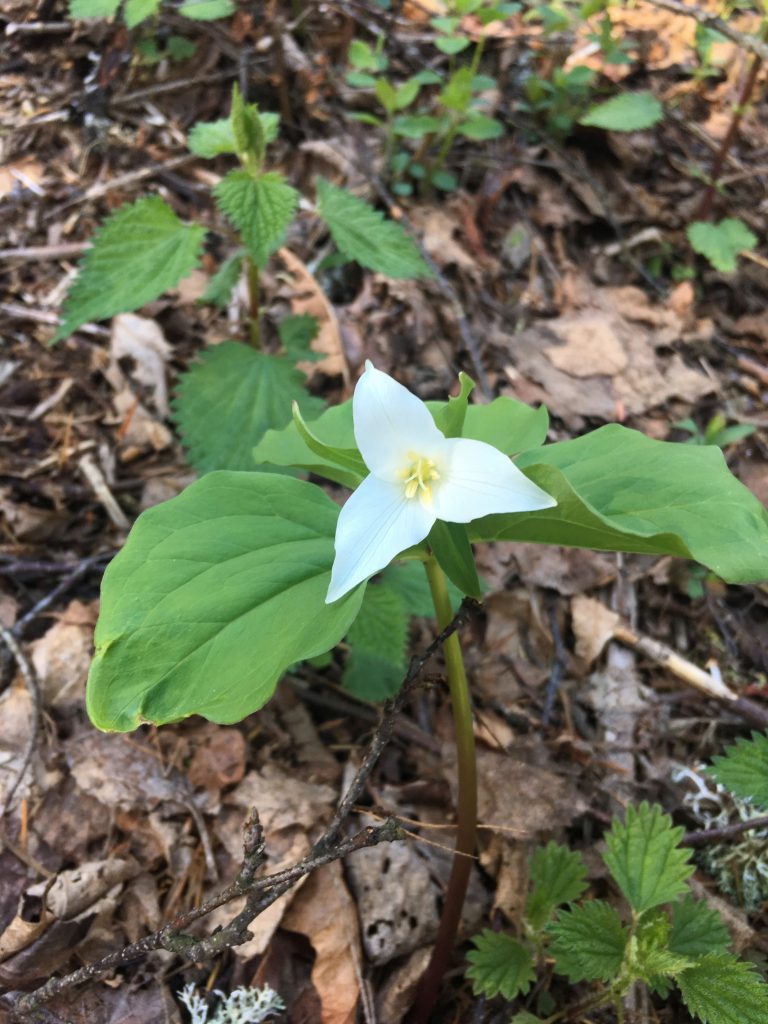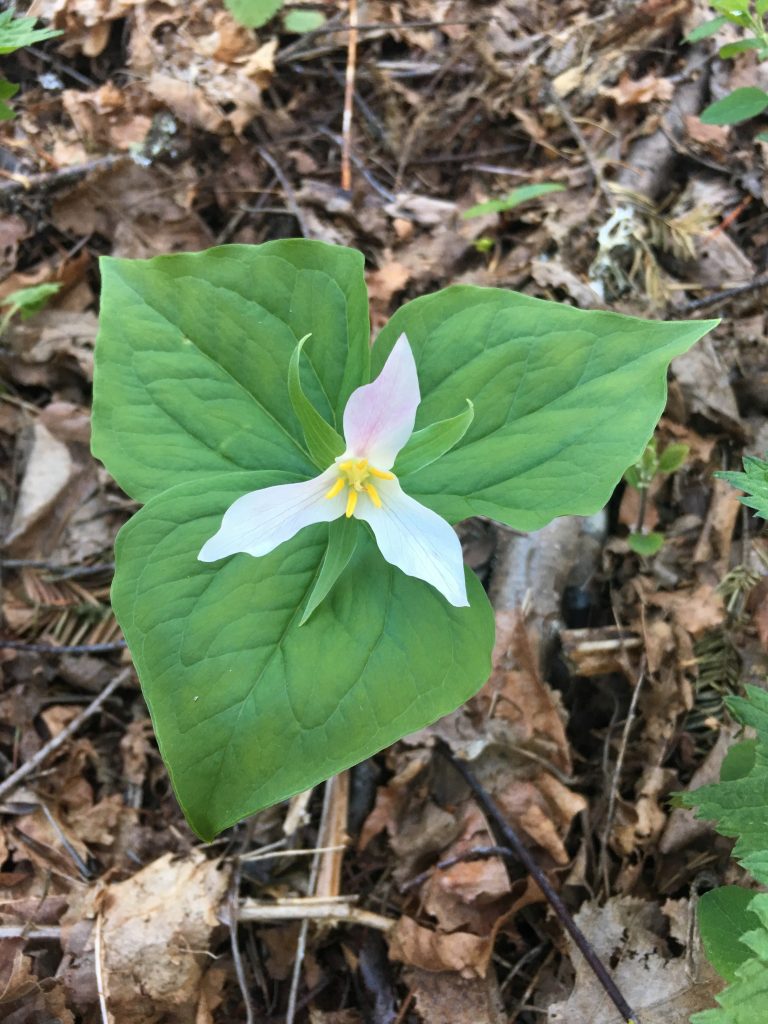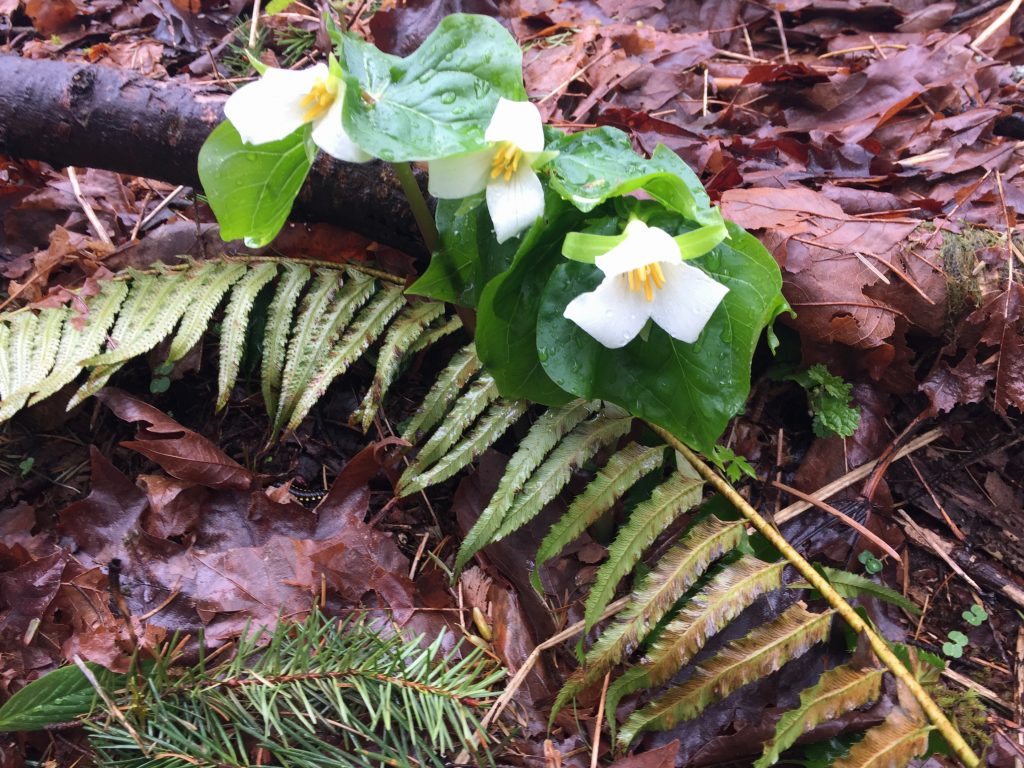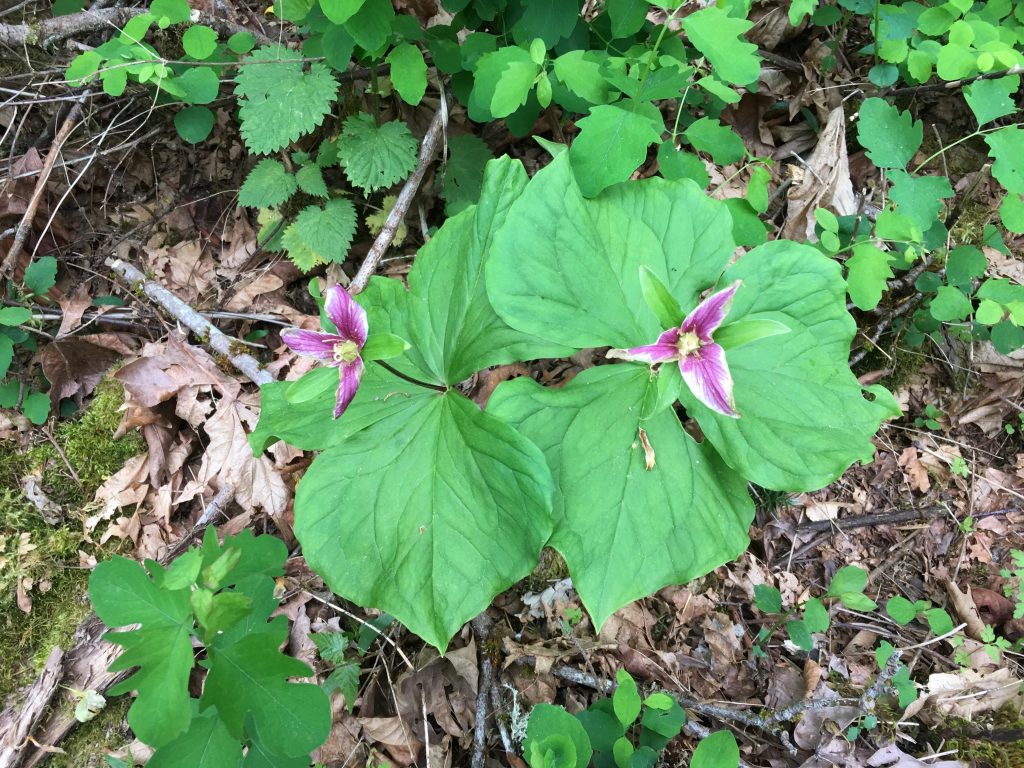
COMMON NAME: Western Tillium, Pacific Wake-robin, Western Wake-robin, Coast Trillium, Coast Wake-robin, Birthroot
BOTANICAL NAME: Trillium ovatum Pursh
PRONUNCIATION: TRIL-ee-um oh-VAY-tum
FAMILY: Melanthiaceae (Previously Liliaceae)
ORIGIN: Native

IDENTIFICATION: This very short flower can easily be missed on the shady, moist forest floor. When it first blooms it is brilliant white, then it gradually turns into various shades of beautiful pink, rose or maroon. The Western trillium has three petals and three leaves (but these particular “leaves” are actually called bracts).

HARVESTING: It is so exciting to spot a Western triullium flower in the wild, and we always feel lucky when we find them on our own property! The Western trillium is also called Wake-robin because the flowers bloom in very early spring, around the same time that the robins rejoin us. You might find this flower blooming any time from late February through May. Though it is not a species at risk, the Western trillium is a perennial that takes at least 7 years to bloom again after it is picked, so it is best to just let it be and enjoy the show!

USES: You might know the Western trillium by another common name–Birthroot–as it has been traditionally used as a medicinal for childbirth. In addition to helping enhance the health of the reproductive systems in both women and men, it is known as a treatment for sore eyes and external boils.
The Western trillium is a herb and its young, unfolding leaves can be eaten. However, before eating, make sure you boil it for 10 minutes. Please heed caution as its parts (berries & roots) though low toxicity if eaten, is poisonous.

INTERESTING FACTS: The Western trillium often lives to be around 25 years old, but 50-year-old plants have been found–and this plant may live even longer! To determine the age of a Western trillium, you can count the scars on the rhizome; each scar represents a year. However, aging this plant can be difficult as the rhizome does decay over time.
Ants steal trillium fruits and bring them back to their colonies to feed to their young. Once the fruit has been eaten by the ants, the seed is left behind and a new plant will get its chance to start a life.
BC Species List: The Western Trillium is currently Yellow on the BC Species List, which means it is not at risk of extinction.
REFERENCES:
Becky is a Clinical Hypnotherapist, Registered Holistic Nutritionist, Landscape & Production Horticulturist, Arborist and budding Herbalist, who recognizes and specializes in the link between healthy soil, the gut and the brain. She also loves being the mom to her two wild and crazy kids Brooke & Connor whom keep her and her ever loving, creative husband Jay on their toes.
Becky is a Clinical Hypnotherapist, Registered Holistic Nutritionist, Landscape & Production Horticulturist, Arborist and budding Herbalist, who recognizes and specializes in the link between healthy soil, the gut and the brain. She also loves being the mom to her two wild and crazy kids Brooke & Connor whom keep her and her ever loving, creative husband Jay on their toes.
Design by NXNW.